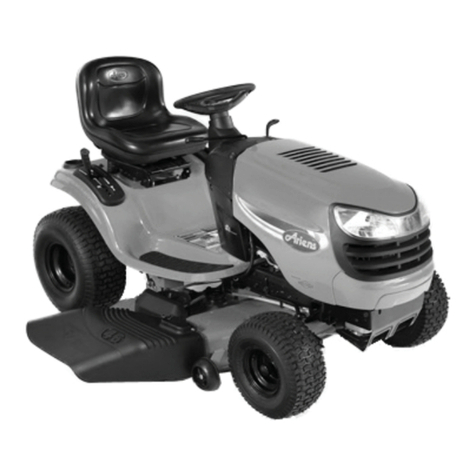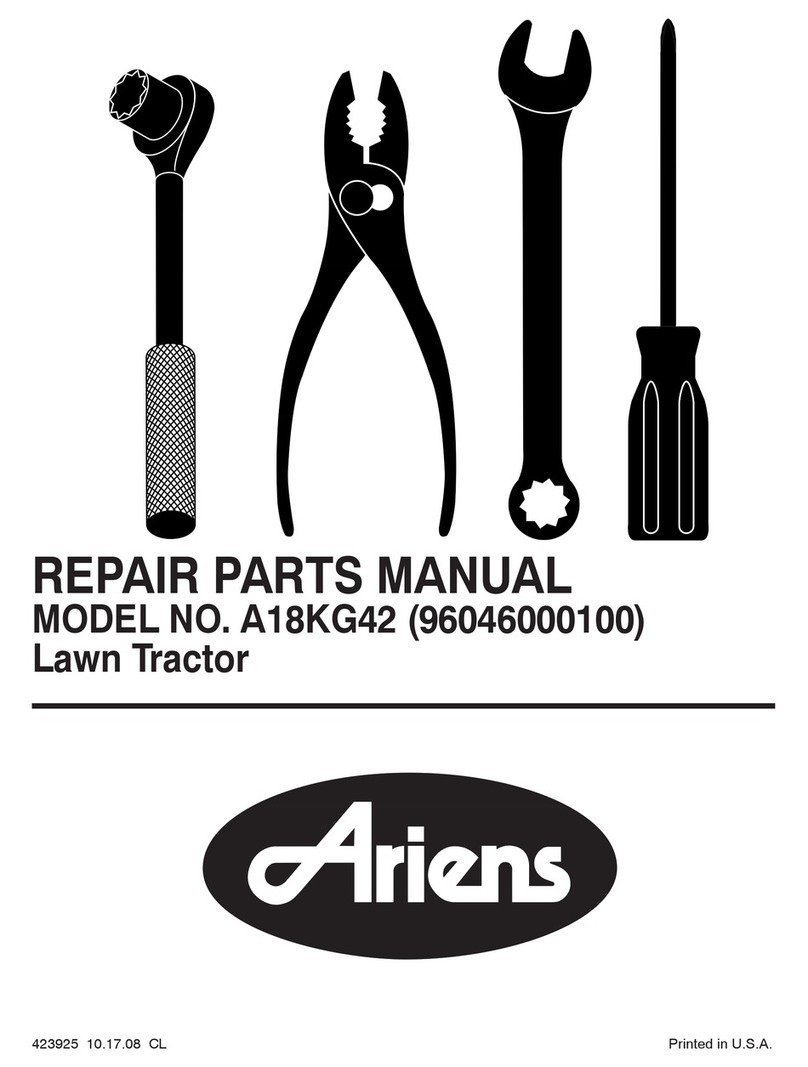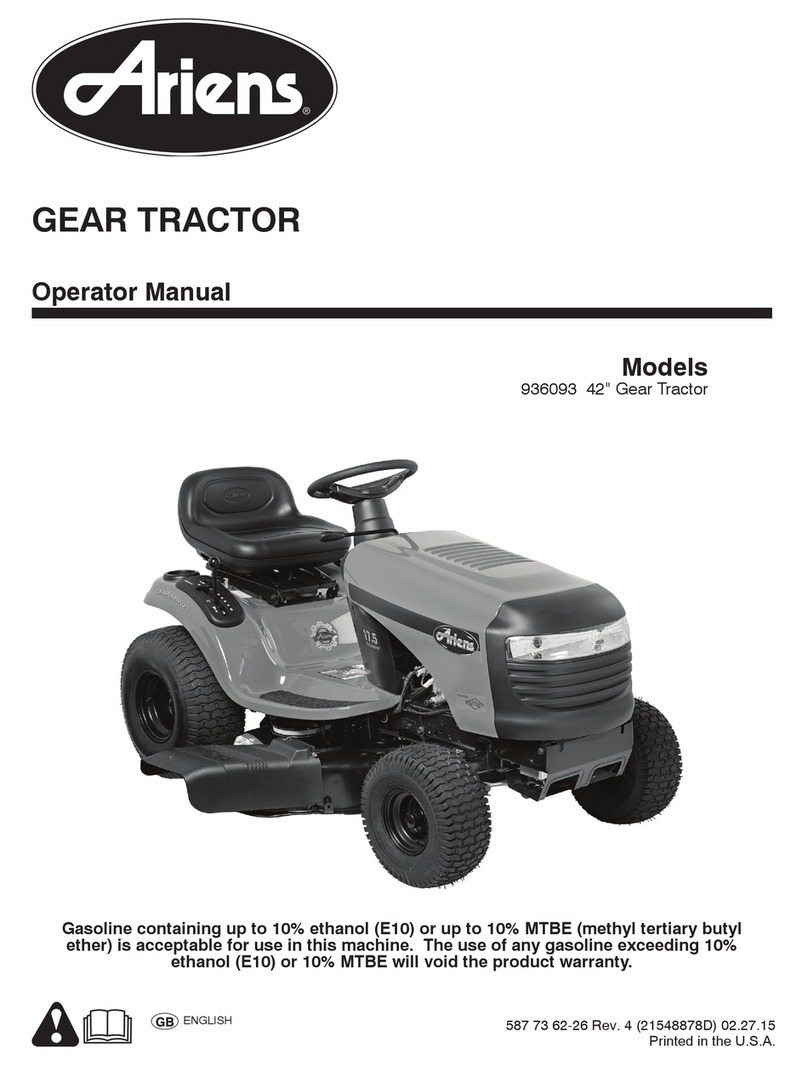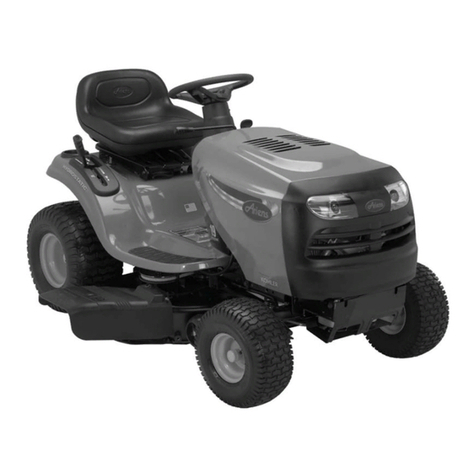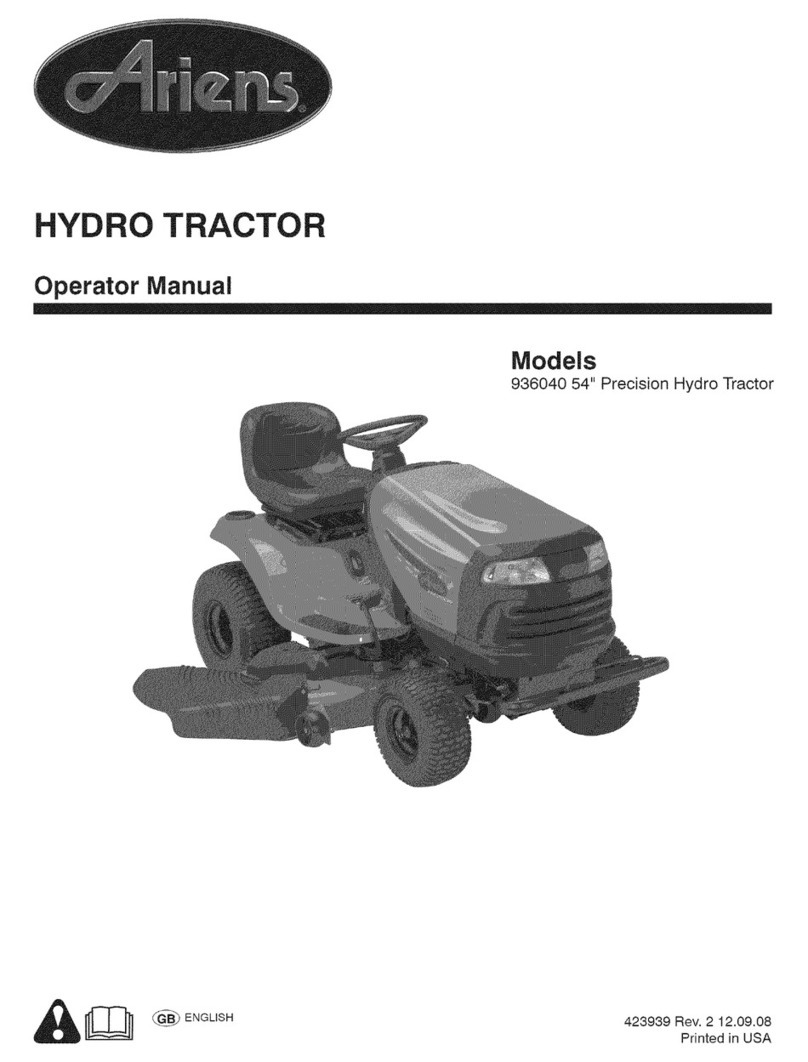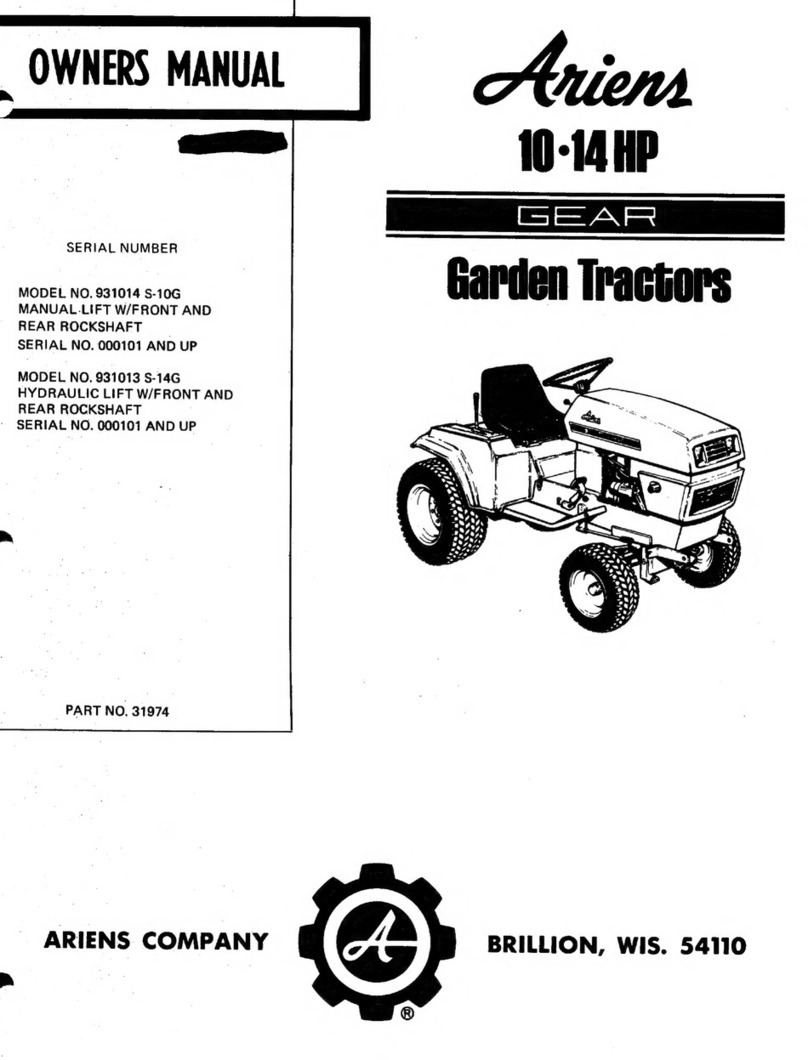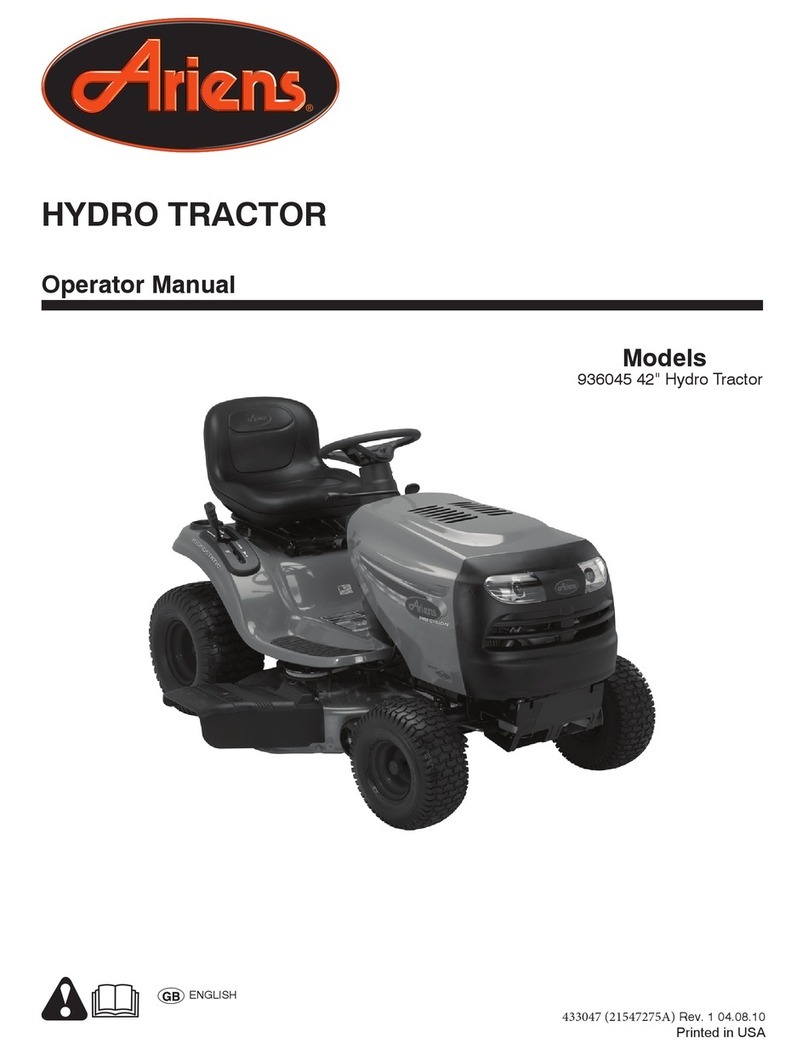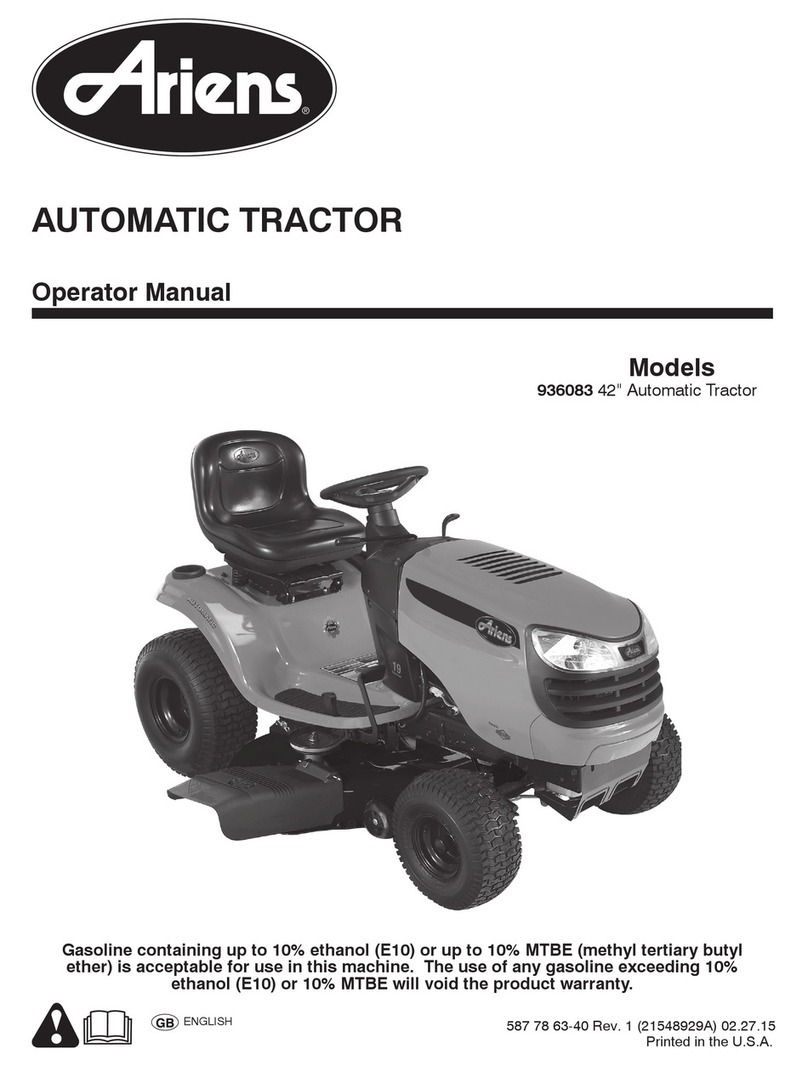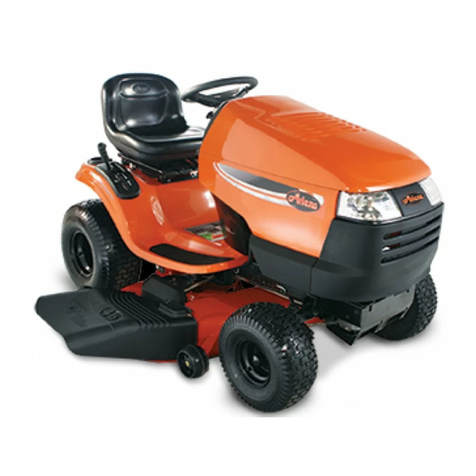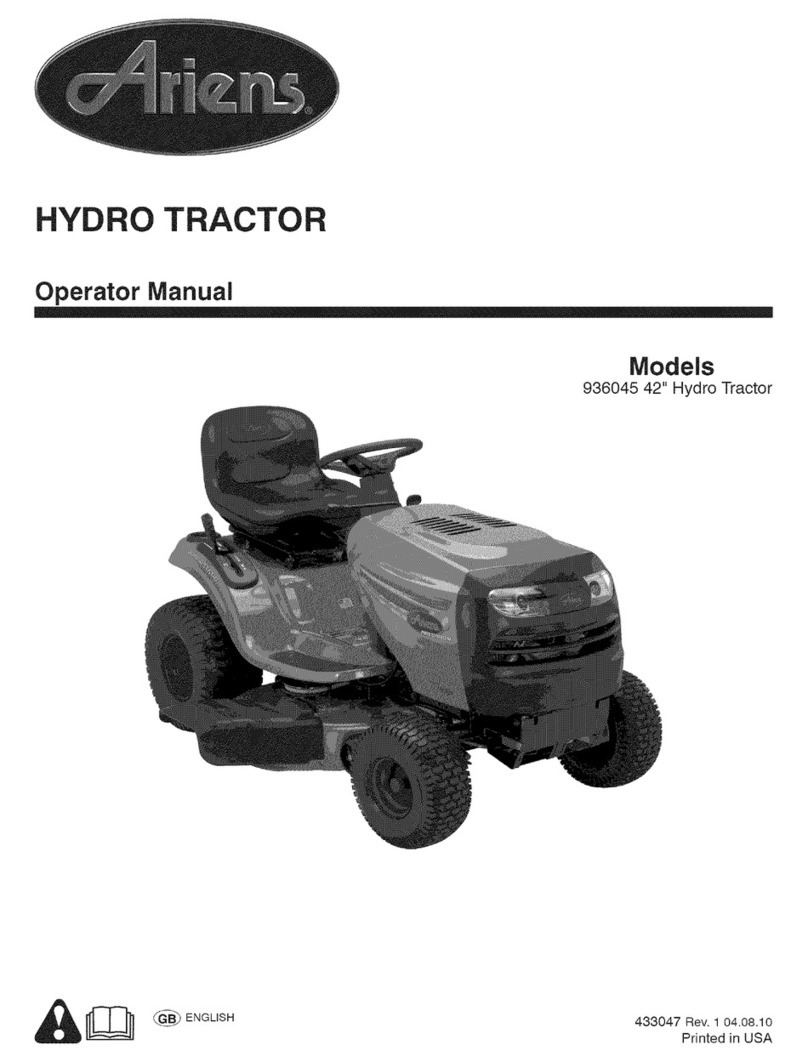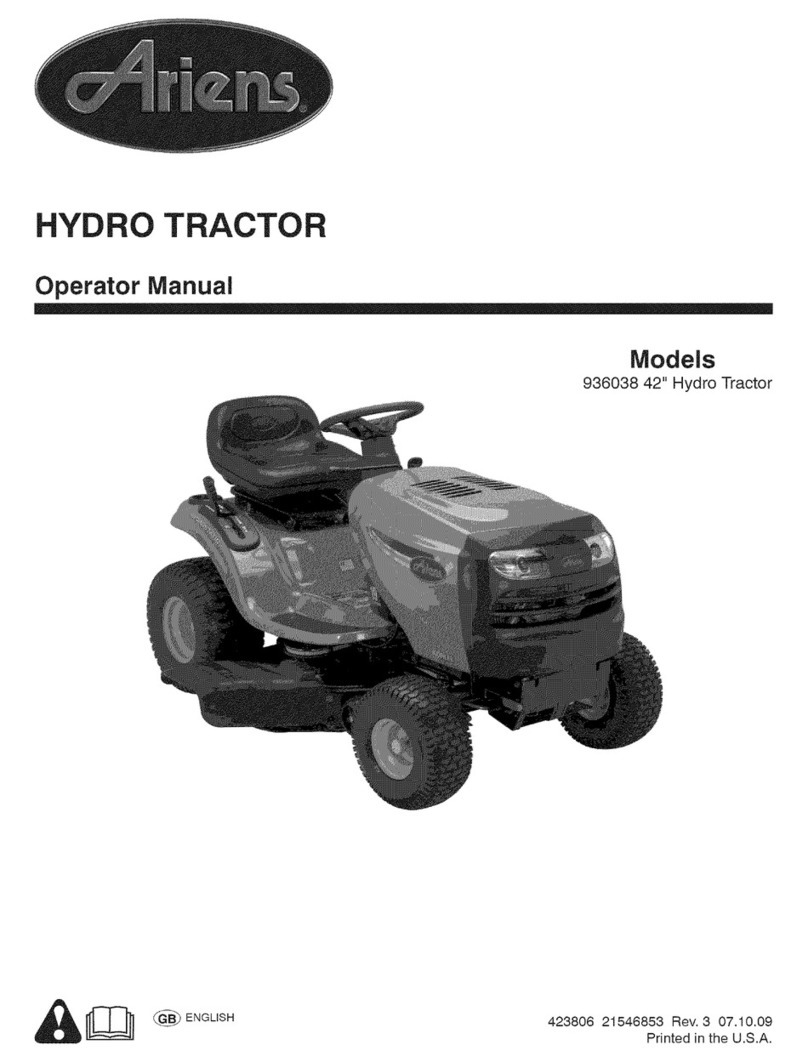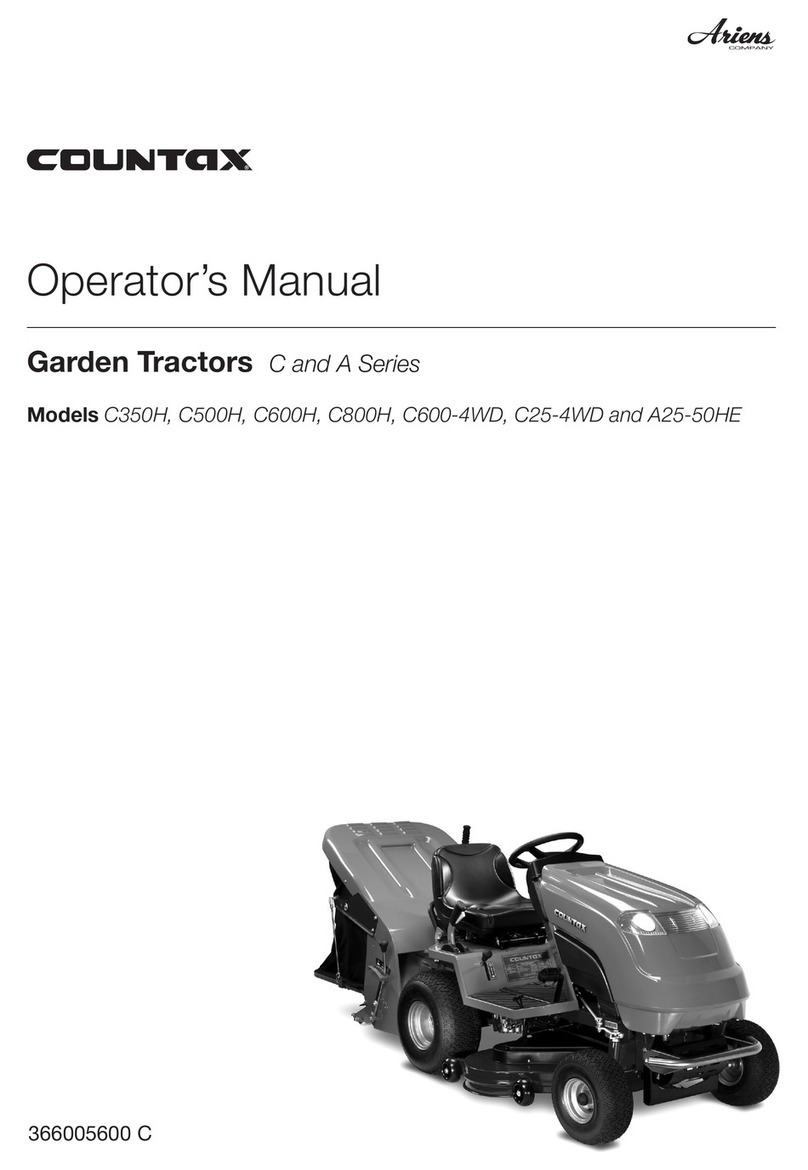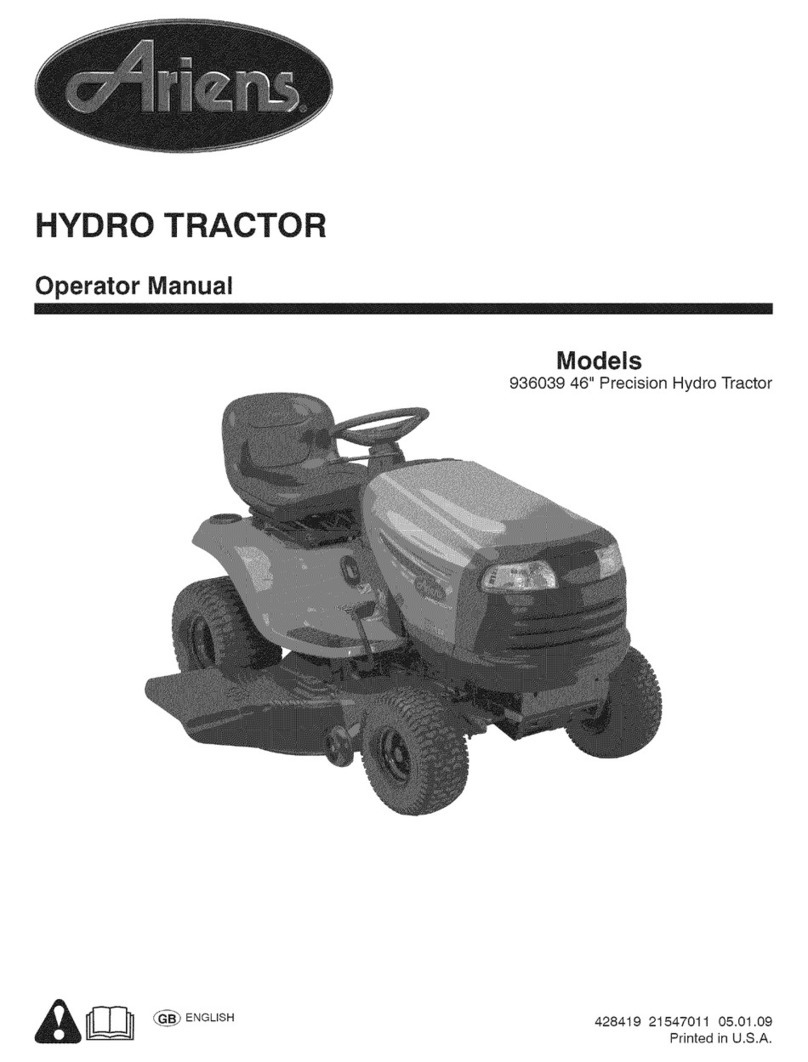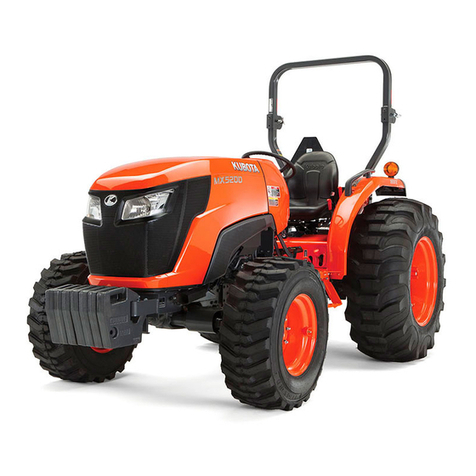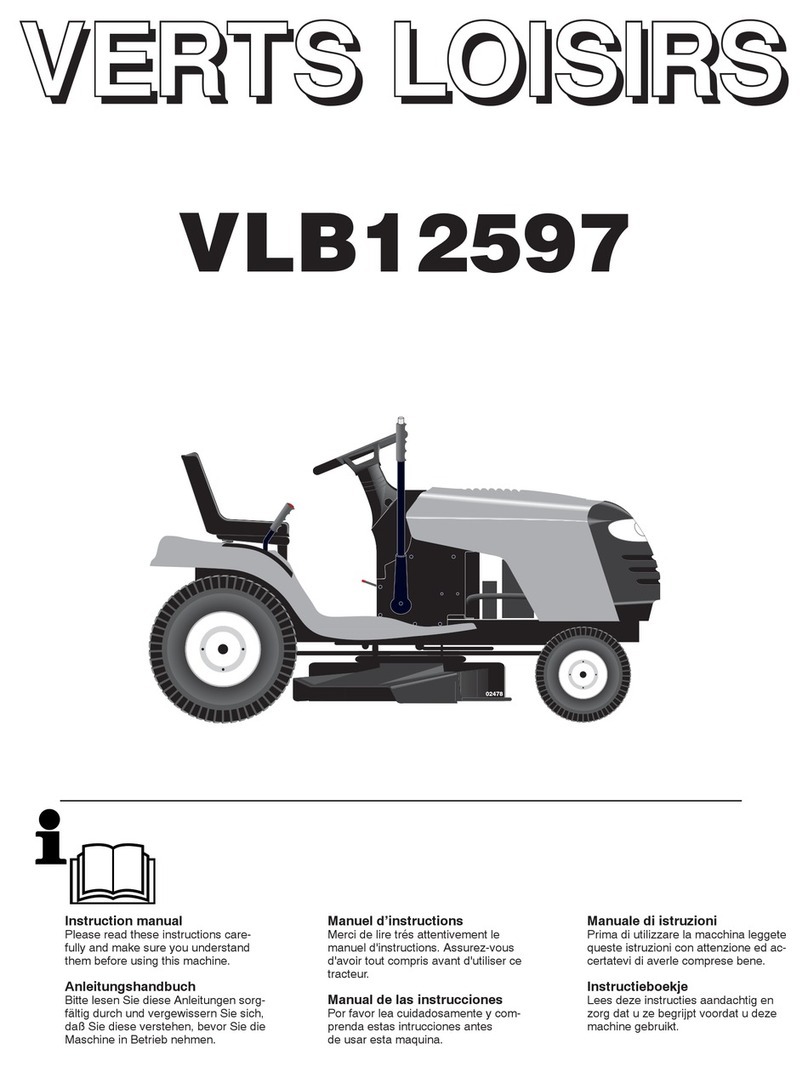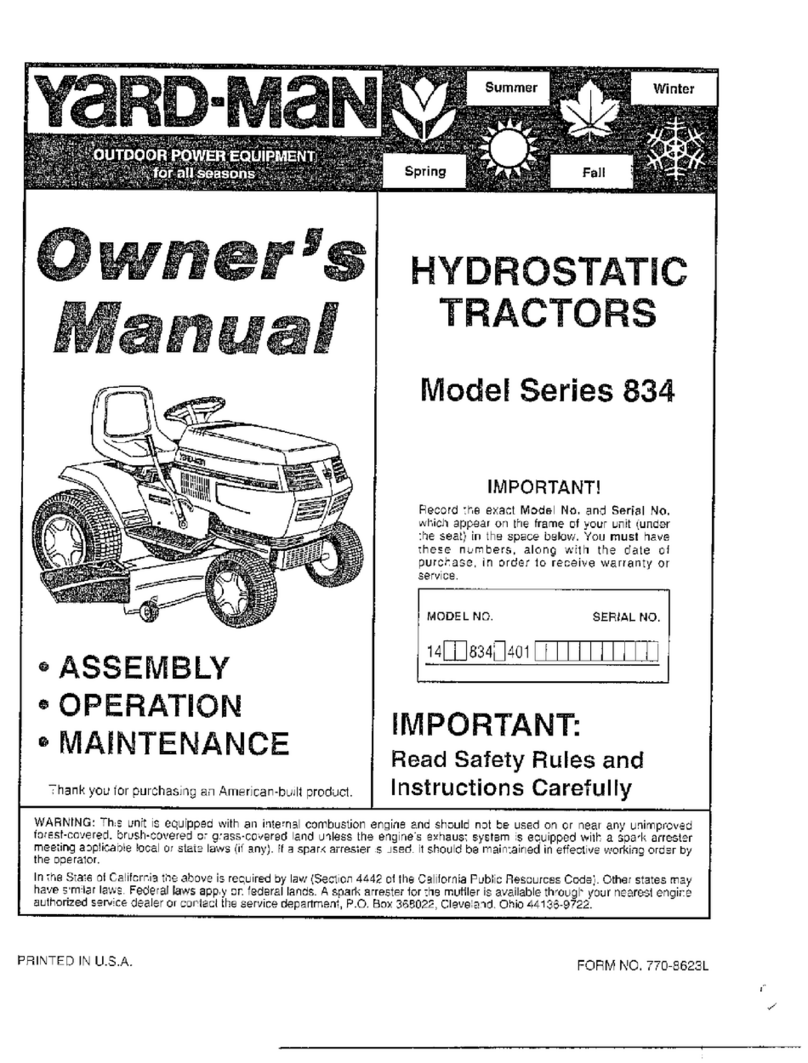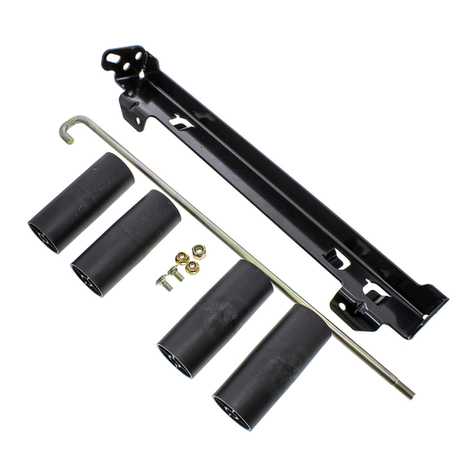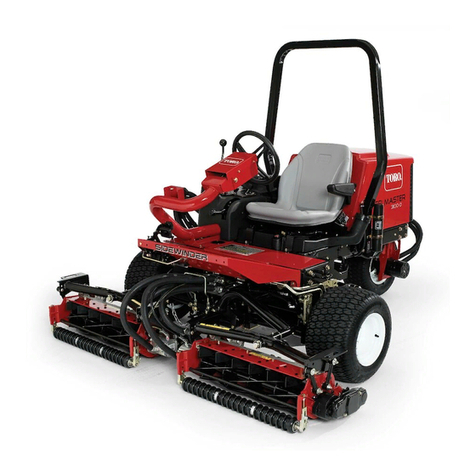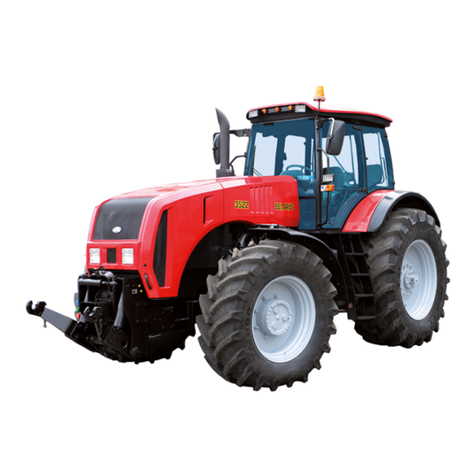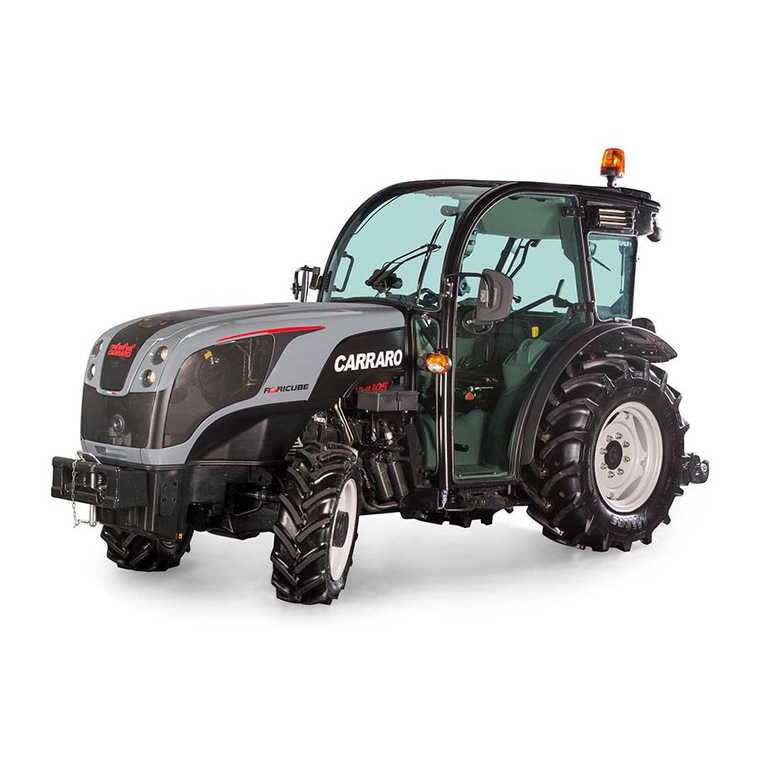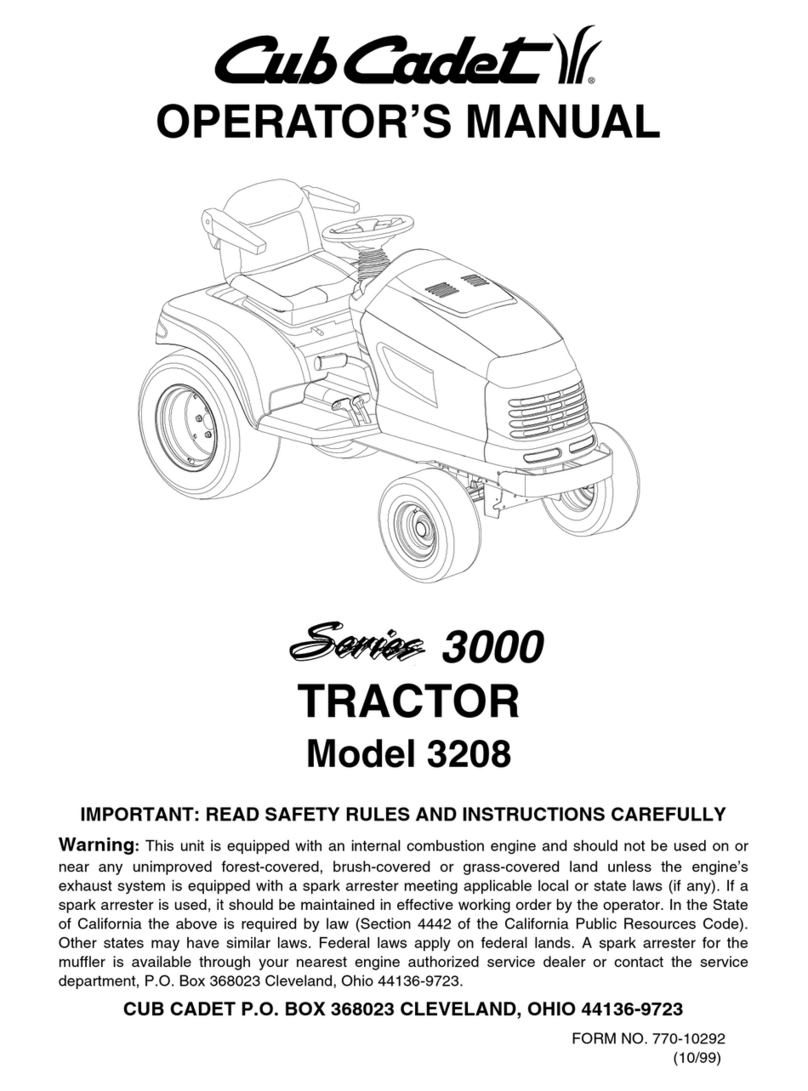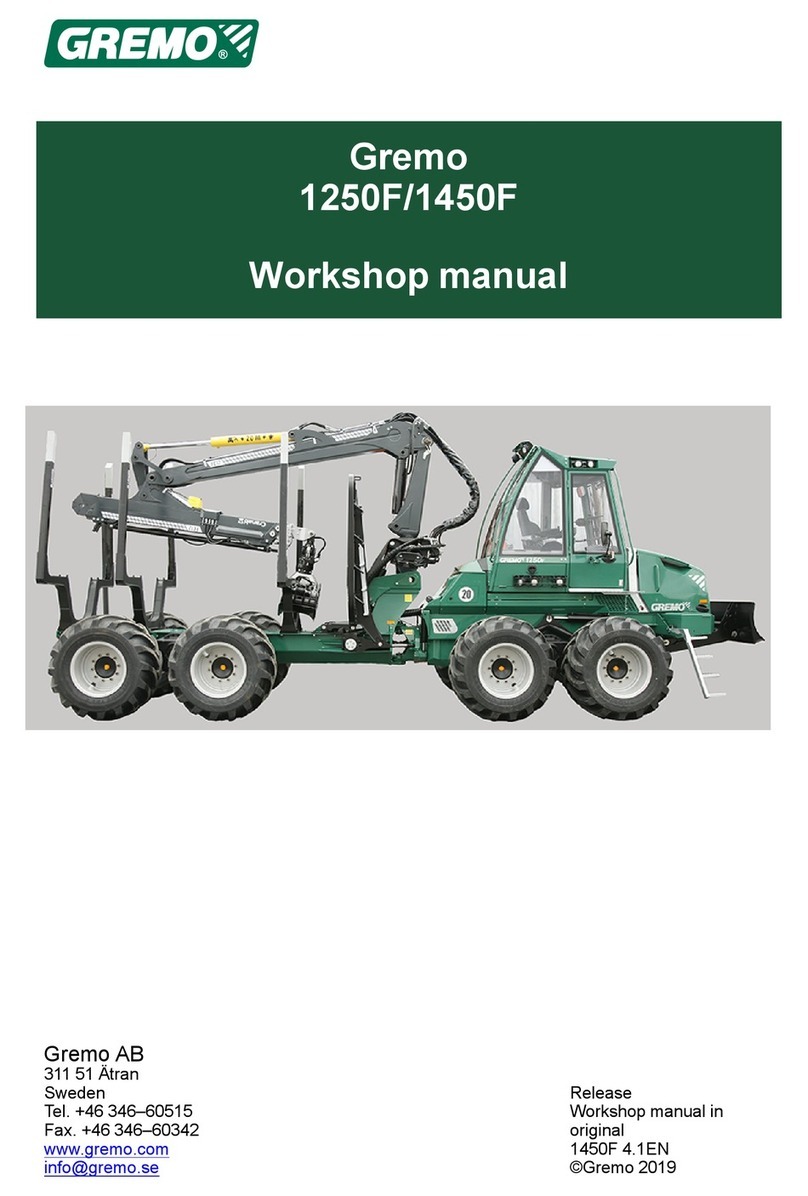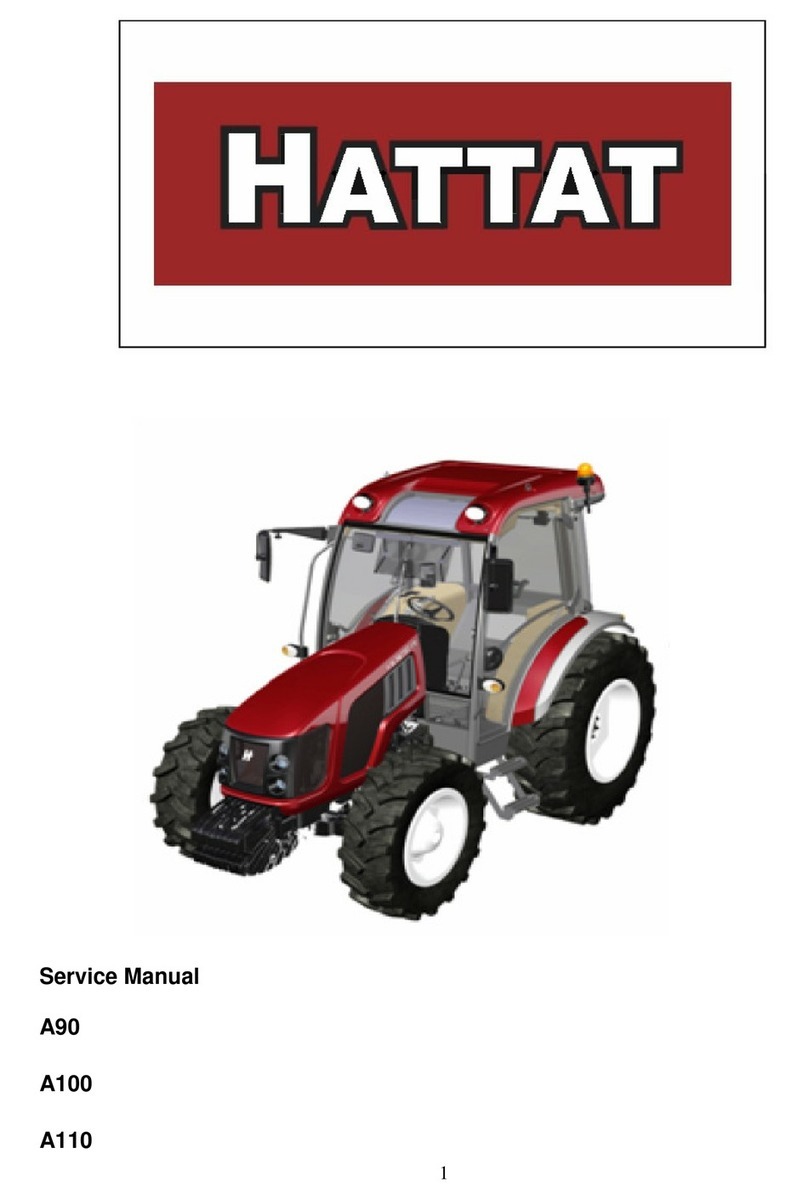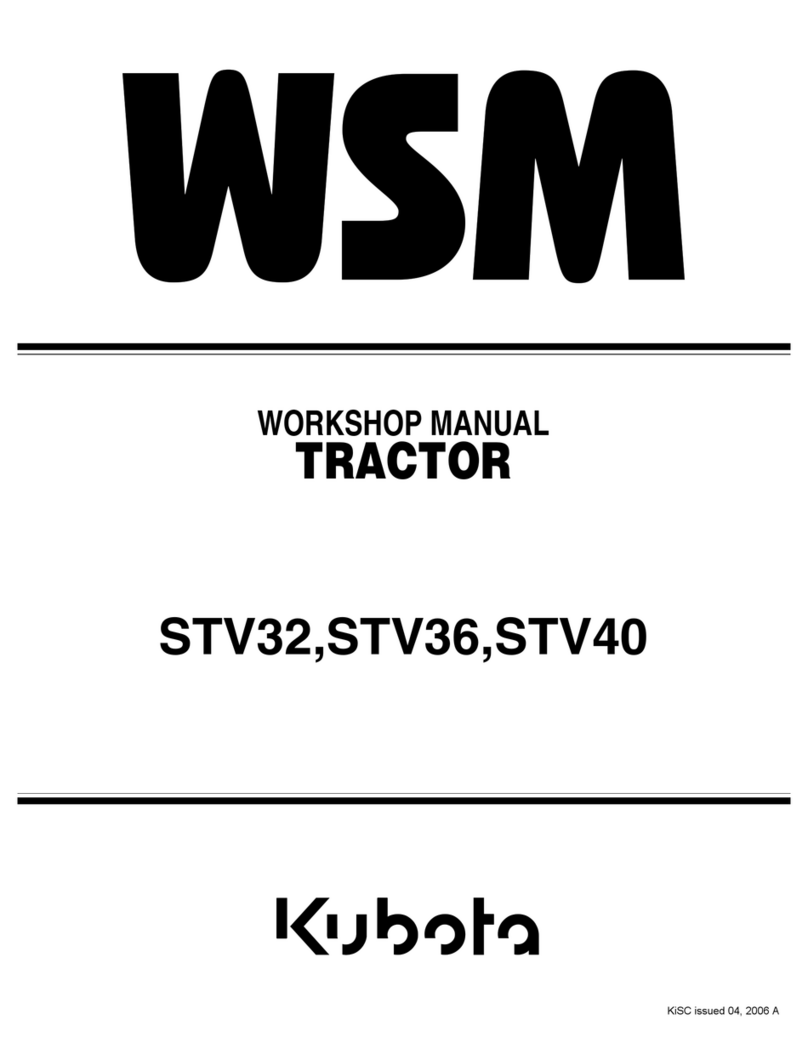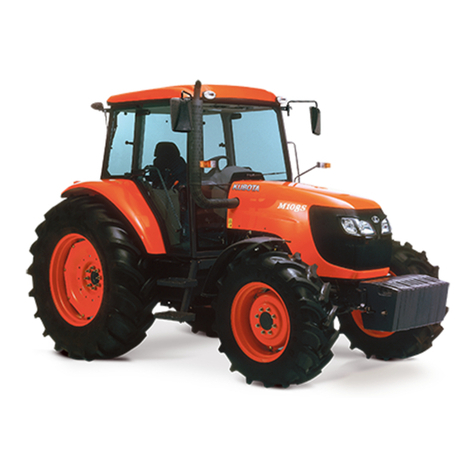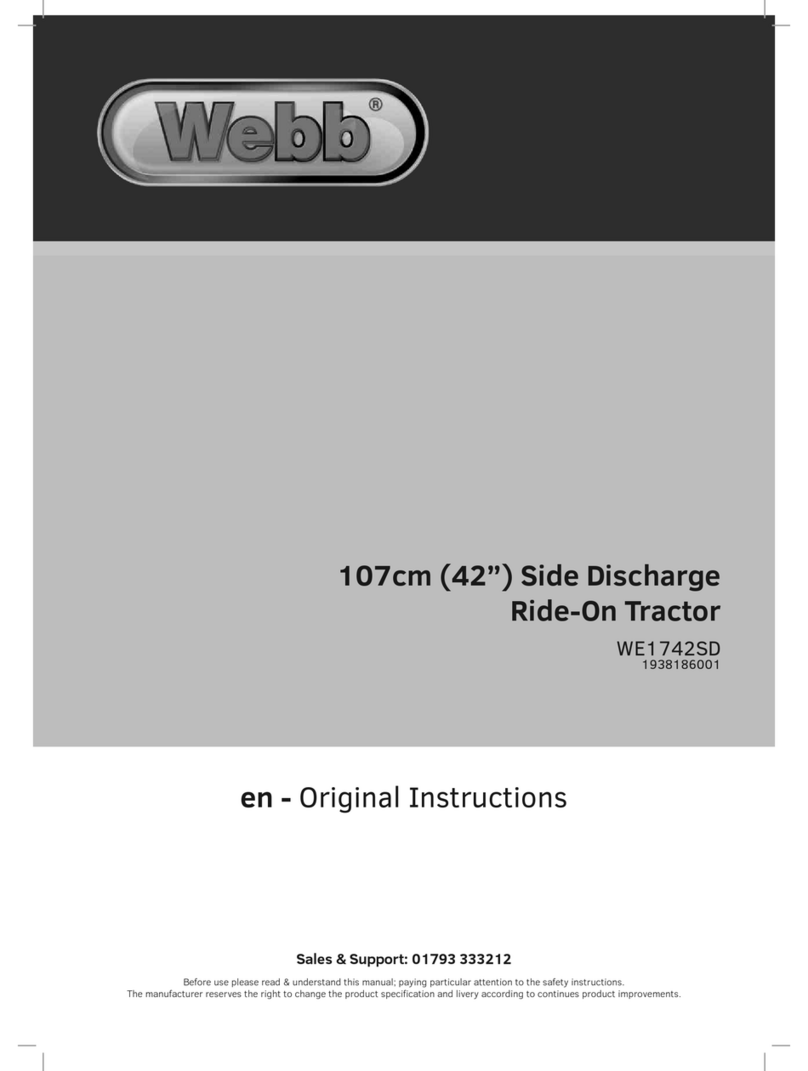
FEATURES AND CONTROLS
®IGNITION AND STARTER SWITCH —FIGURE 1
The ignition and starter switch has three positions: “OFF",
“RUN", and “START”. Start the engine by turning the key
fully clockwise to “START" position and then release the key as
soon as the engine starts. Stop the engine by turning the key
counterclockwise to the “OFF" position.
®THROTTLE-CHOKE CONTROL LEVER —FIGURE 1
This control operates both the throttle and choke. When starting
acold engine, raise the lever past the offset and into the
"CHOKE” position. After the engine has started, lower the lever
to the throttle operating range and allow the engine to warm at
1/2 throttle. Select the appropriate engine speed in the throttle
range after the engine has warmed up.
NOTE: UNLESS OTHERWISE SPECIFIED, THE ATTACHMENTS
SHOULD BE OPERATED AT FULL THROTTLE. THE THROTTLE IS
NOT TO BE USED TO SELECT DESIRED TRAVEL SPEEDS.
OPERATE AT FULL THROTTLE AND REGULATE GROUND SPEED
WITH THE GEAR SHIFT LEVER.
©LIGHT SWITCH —FIGURE 1
Turn lights on by pulling the control knob out. Turn lights off by
pushing the knob in.
@ATTACHMENT LIFT LEVER —FIGURE 1
To raise the attachment, depress thumb button, pull the lever to
the rear, and release thumb button. This will hold the attachment
in the raised position. When using the mower attachment, select
the “notch" that allows the mower to cut at the desired height.
To lower the attachment, pull the lever to the rear, depress the
button to release the latch and allow the lever to move forward.
©IMPLEMENT POWER CONTROL —FIGURE 1
The Implement Power Control is used to operate the at-
tachments. Push the lever forward to engage the clutch and
drive the attachment. Pull the lever rearward to disengage the
clutch and stop the attachment. The lever must be in the rear
(disengaged) position to start the engine. THIS IS ASAFETY
FEATURE. The engine will not start until the lever has been
placed in the disengaged position.
©SPEED SELECTOR LEVER -FIGURE 2
The Speed Selector Lever is used to select any of three forward
gears or one reverse gear. The markings “1, 2, 3“ and "R” on
the floor plate indicate the locations of the gears. The slowest
forward gear is indicated by “1 ", the secondary gear, "2", and
the fastest gear, "3”. The "R" indicates reverse. The Speed
Selector Lever must be in the “NEUTRAL" position as shown in
Figure 2to start the engine. THIS IS ASAFETY FEATURE.
©HIGH-LOW SPEED RANGE SELECTOR -FIGURE 2
The High-Low Speed Selector gives achoice of six forward
speeds; three in “HIGH" range; and three in “LOW" range.
The speed in reverse gear is the same in both ranges.
FIGURE 2
©CLUTCH PEDAL -FIGURE 1
Depressing the Clutch pedal disengages the transaxle from the
engine and permits shifting the speed selector to any desired
gear. Always release the clutch pedal slowly' for smooth ac-
celeration. Do not allow foot to rest on pedal except when
clutching.
IMPORTANT: ALWAYS DEPRESS CLUTCH PEDAL TO EASE
ENGINE STARTING. DEPRESSING CLUTCH PEDAL RELEASES
PARKING BRAKE. BE READY TO APPLY FOOT BRAKE WHEN
STARTING FROM PARK POSITION.
©BRAKE PEDAL —FIGURE 1
Depressing the brake pedal applies pressure to the disk brake
and stops the tractor (with the clutch depressed). Be sure to
depress clutch pedal to disengage the clutch before braking.
Brake will not stop tractor without depressing clutch pedal.
©PARKING BRAKE LOCK -FIGURE 3
AParking Brake Lock is provided to prevent the tractor from
moving when parked or left unattended. To lock the brake, pull
the parking brake lock up with the pedal fully depressed. Then
release the brake pedal. Figure 3shows the parking brake lock
engaged. Clutch pedal must not be depressed when locking
brake. Parking brake lock may be disengaged by depressing
either brake or clutch pedal.
-4-

